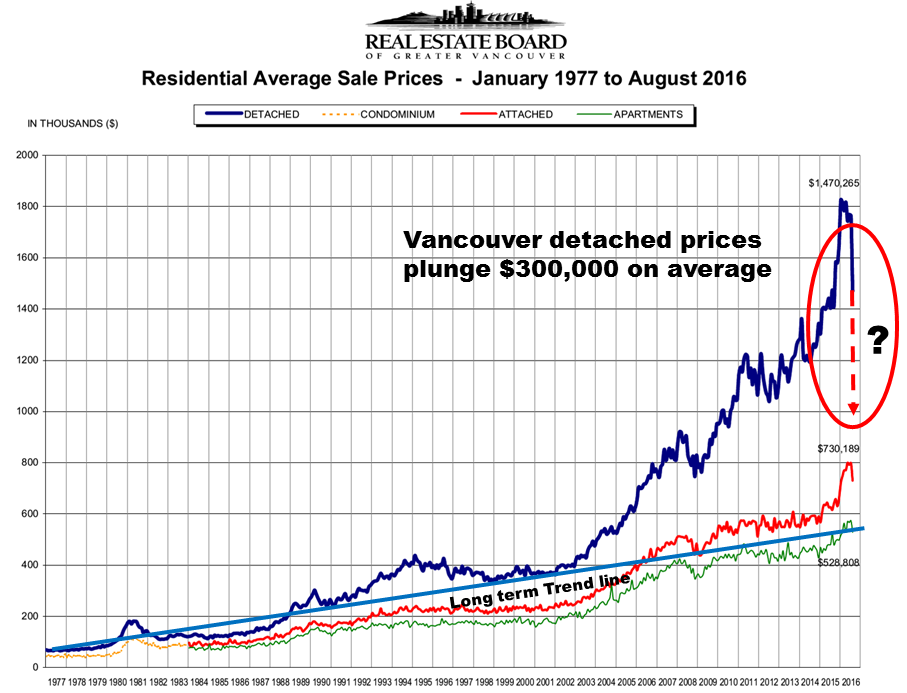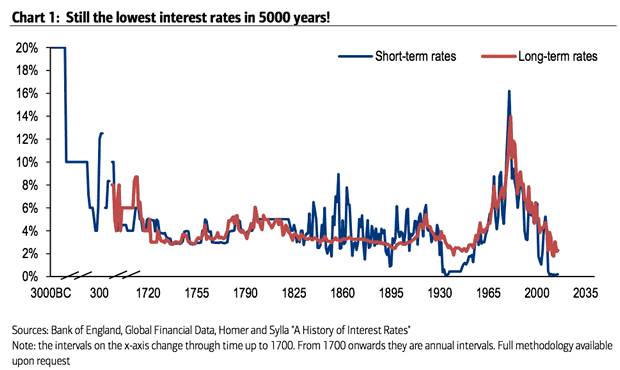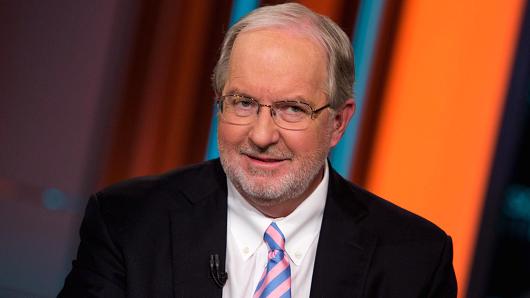Real Estate
Ozzie Jurock explains his recent newsletter “4 Reasons” headline in the title above. A recent update about what is now being called the “moral” and “ethically” wrong BC tax on foreign buying of Vancouver real estate, the recent numbers on Vancouver real estate as well as Ozzie’s two ‘Hot Properties”.
Don’t miss Featured Guest: Dennis Gartman: Major Markets Are Heading Down


Next month would be 35th anniversary of the bull market in long-term US Treasuries. The yield on 30-Year US Treasuries peaked at 15.2% in October 1981 and has been steadily going down since and is headed to below 1% in the next 2-3 years. Adjusted for risk, there has been no investment in the history of modern capitalism, for 400+ years since the founding of Dutch and English East India trading companies, which has been as rewarding as the investment in the long-term US Treasuries for the past 35 years.
For this 35-Year period, 30-Year US Treasuries have yielded significantly more than the inflation rate. Add to that the capital appreciation in the bond price the purchasing power of the dollars invested in long-term Treasuries 35 years ago, with coupons reinvested, has multiplied more than ten fold! One can buy more than ten times the gold, or crude oil, than one could have bought with the money. At any time in history a safe investment that has multiplied the purchasing power of savings this greatly would be considered a miracle and we are living thru this miracle.
Gross Ignorance of Treasuries Among Investors
Very few people know that on a total return basis the 30-Year bonds have significantly out-performed S&P 500 for the past 18 years and the past 9 years, periods during which we have seen bubbles and bursts in the stock market. Very soon we would have a 36-40 year period during which the long-term bonds would have out-performed S&P 500! The reason is not hard to see. A picture (please see Fig. 1) is worth a thousand words.

As can be seen in the figure, the long-term bond yield has been significantly above the inflation rate, i.e., a very good protector of purchasing power, and except for a very brief period during the 2008 crisis handsomely superior to the yield on S&P 500.
You would never see this picture shown on Bloomberg, or CNBC, or by any economist, off and on Wall Street. This would be the best indictment against investing in stocks. Bloomberg and CNBC have been scaring the public not to invest in Treasury bonds because they claim that there is a bubble in US Treasuries and no bubble in stocks. It also makes liars out of economists who failed to foresee the crisis of 2008 and the following depressed growth forecast by falling Treasury yields and economic manipulators advising the Donald and Hillary who promise 3.5% and 3% annual growth rates for the real GDP. What these two known dishonest candidates are likely to deliver is negative growth for the next 4 years and a huge deficit spending. Their economic advisors are nothing more than propagandists that surround powerful politicians in economic policy making positions. The Donald would be lucky if he escapes –3.5% annual growth rate within a year or two of taking office.
Falling Yields Rooted In Very Weak Economic Prospects
The 10-Year and 30-Year Treasury yields are highly correlated with the future nominal GDP growth rate. Fig. 2 tells the story of falling nominal GDP growth rate that mirrors the falling yields.

No amount of intervention by central planners can change the long-term course of the economy except for pushing the necessary adjustments into the future at a very high cost and inevitably leading to crises. The weak prospects for the future of the economy have everything to do with incessant intervention via deficit spending (fiscal stimulus) and monetary policy via artificially low rates. The current artificially low Fed Funds rate and very high debt/GDP guarantees much weaker economy in the future than the past 15 years that have seen the weakest economic growth in US history over a 15-year period, below 2%.
Putting Money Where Mouth Is
In 1998 I concluded that the stock market has been turned into a scam and a vehicle for massive financial fraud and it is the primary reason for inequality that has grown since. I concluded that the asset bubbles driven economy would have no choice but to end in a deflationary depression. It is obvious that with that view the long-term US Treasuries would be a great investment. Since then long-term US Treasuries have out-performed S&P 500, as mentioned earlier. But, the best is yet to come because the yields in the US would go negative for maturities below 5 years. The 10-Year yield would be below 0.5% and 30-Year yield close to 1%.
With that view I have put my money where my mouth is. Currently, majority of my family’s net worth is in US Treasury STRIPS with maturities shown in Table 1. There have been some volatile periods following the crisis of 2008 that have created some good trading opportunities. The largest number of purchases were made towards the end of 2013, the best buying opportunity in the last 4 years, with average gain of 40%, and some in early 2011, the best buying opportunity in 8 years.

The sad fact is that most people don’t know how to invest in Treasuries, or how best to invest in Treasuries. While a topless dancer in my neighborhood bar in 1990s knew how to buy stocks and she and her friends loved CSCO! I was wearing a Cisco (my employer at the time) T-shirt and she told me that she owns their stock. Propaganda on Bloomberg and CNBC works: buy stocks and don’t buy bonds. Few months ago on CNBC Warren Buffett said that he has all his employees’ pension funds (many of the companies that he acquired) in stocks and nothing in bonds. He said laughingly that it was a no-brainer! Thank you, Warren, for keeping the Treasury prices lower than they would have been and giving little people like me better opportunity to buy. I am confident that Buffett’s reputation as great investor would be ruined when US Treasury bonds out-perform BRK and S&P 500 by a factor of at least 5 over the next 3-5 years. The Bull market in long-term Treasuries has a ways to go. The stock market is primed for a serious decline.
….related:

Deutsche Bank and Commerzbank are presently discussing merger talks. The fact that these meetings are occurring, is a signal that Germany’s banking troubles are indeed accelerating.
They are desperately seeking ways in order to cut costs and improve profitability. These plans include restructuring and job cuts using most highly unconventional measures. Last June 2016, Reuters cited anonymous sources as saying that Commerzbank was exploring the option of hoarding billions of euros, in vaults, as a way of avoiding paying a penalty to the European Central Bank which is due to negative interest rates.
Their main problems are derived mostly from both low and negative interest rates. These lenders are used to depending on interest rate margins for income while offering some services to depositors at either low or no cost. Low interest rates have significantly eroded these banks’ abilities to make money. It has become difficult for German banks to give incentives to their customers so as to keep their money in their financial institutions. These inefficiencies and the intense competition within the German banking sector have already led to serious financial difficulties. If one combines these factors with the new challenge of declining interest rates, what possible positive impact can they expect to incur?
Interestingly, rates are not just low within the context of American history but they also happen to be at their lowest levels ever in over 5,000 years of civilization.
5,000 Years Of Interest Rates – Rates Lower Than 1930’s Depression Era

Deutsche Bank is not merely Germany’s biggest bank but the political role that it plays in Germany is unique when compared to other countries. Deutsche Bank’s importance to Germany is many times greater than that of an investment bank like Lehman Brothers was to the U.S., in 2008. Deutsche Bank is technically a private bank, however, it is informally tied to the government and formally tied to most major German corporations. The banks’ fate will have an impact on all of Germany.
The Italian banking crisis is not only Italy’s problem!
Italy’s non-performing loan issues have now become common knowledge. Who will be forced into dealing with the repercussions of settling Italy’s impaired debt? That is a political question, and the answer depends, in large measure, on who holds Italian bank debt.
The U.S banks are not shielded from these European Continental banking problems. There is a substantial amount of uncertainty and risk.
The consequences of these failures pyramid the crisis due to the European Unions’ regulations. The European Central Bank (ECB) and the Central Banks of member countries cannot bail out failing banks by recapitalizing them. The bail-in strategy is, in theory, a mechanism for ensuring fair competition and stability within the financial sector, across the Eurozone.
The bail-in process can potentially apply to any liabilities of the institution that is not backed by assets or collateral. The first 100,000 euros ($111,000), in deposits, are protected in the sense that they cannot be seized, whereas, any money above that amount can be.
Germany insisted that the bail-in process should prevail.
The Bank for International Settlements stated that German banks are the second most exposed to Italy, after France, with a total exposure of $92.7 billion. Demand for gold has increased!
Italy’s ongoing banking crisis is presenting yet another threat to the stability of the ECB.
Commerzbank’s financial statements revealed that their Italian sovereign debt exposure was 10.8 billion euros ($12.1 billion).
Deutsche Bank’s net credit risk exposure to Italy is 13.3 billion euros as of the end of December 2015. Its’ gross position in Italy is 35.4 billion euros. Deutsche Bank is sitting on $41.9 trillion worth of derivatives.
The consequences of large banks failures are significant
Gold Is The Only ‘Safe Haven’ Left in the World
Gold has remained as a form of currency for many centuries. Whenever countries followed a strict gold standard and used it as their currency, those economies were very stable. But, governments have always surpassed their means, with their costly spending, and have to leave their gold standard so as to fund their inefficiencies. Currently, gold is now beginning its’ multi-year “BULL MARKET”. Gold is the only ‘asset class’ which will maintain its’ ‘store of value’ during this impending crisis which is on the near horizon. The ‘Gold mania’ is about to be ‘unleashed’. While global Central Banks are now implementing ‘negative interest rates’, this is the perfect scenario for gold to surge much higher.
Gold does have a historical store of value characteristics. It is held by Central Banks and institutions as a reserve. They do not want to sell it; on the contrary, many of them want to buy still more and accumulate it. Therefore, gold’s characteristic role, in regards to sovereign reserves, is still intact even amid the fascinating evolution of Central Banking and institutional finance that we are witness to, today.
….related:

An Ongoing Photo Essay
Lately, Canada’s energy markets have become even more curious.
The West Coast pipeline is protested because it would increase oil tanker traffic on the pristine Pacific Ocean.
The pipeline to the East Coast is protested, despite that it would reduce the number of oil tankers on the pristine Atlantic Ocean.

“TransCanada Corp launches US $15 billion lawsuit against U.S. government for rejecting Keystone XL”
– Financial Post, January 6, 2016.

During Obama’s term the U.S. constructed some 10,000 miles of pipeline.
Wind Turbines 1980’s: Admired

Oil Wells 1930’s, California: No Longer Admired

Wind Turbines Recent: Greatly Admired

U.S. solar developers are luring cash at record rates from investors ranging from Warren Buffett to Google Inc. (GOOG) and KKR & Co. by offering returns on projects four times those available for Treasury securities.
Buffett’s Berkshire Hathaway Inc. (BRK/A) together with the biggest Internet search company, the private equity company and insurers MetLife Inc. (MET) and John Hancock Life Insurance Co. poured more than $500 million into renewable energy in the last year. That’s the most ever for companies outside the club of banks and specialist lenders that traditionally back solar energy, according to Bloomberg New Energy Finance data.
Wind Turbine Bird Kills:

In 2011 the Los Angeles Times reported such bird kills amounted to 440,000 annually.
Not Widely Published
Oil-Coated Birds:
Widely Published



Lenin Finally Topples
Pipeline Right Of Way, Pennsylvania:
Very unpopular

Permitted Way of Transporting Crude Oil

Train Wreck Alabama

Train Wreck February 2015: New, Stronger Oil Tanker Cars

“Crude oil hauled by rail needs to be shipped in stronger tanker cars and on safer routes, transportation investigators in the U.S. and Canada said following a series of accidents in North America.”
– Bloomberg, January 23, 2014.
Pipelines
2,500,000 Miles Can’t All Be Wrong

By way of perspective, the length of proposed Keystone pipeline amounts to 1,179 miles.
That works out to an increase in total mileage of 0.0047 percent.

BOB HOYE, INSTITUTIONAL ADVISORS
WEBSITE: www.institutionaladvisors.com
….also, speaking of energy:
Fundamentals for Uranium Look Great; Is the Uranium Market Ready to Soar?

Featured guest Dennis Gartman is very bearish the Euro currency, Oil based on abundant supply and Stocks. The US election will have a significant impact on prices. Bottom line, he likes cash for the next six months, longer term…..
To listen to the entire show go HERE













